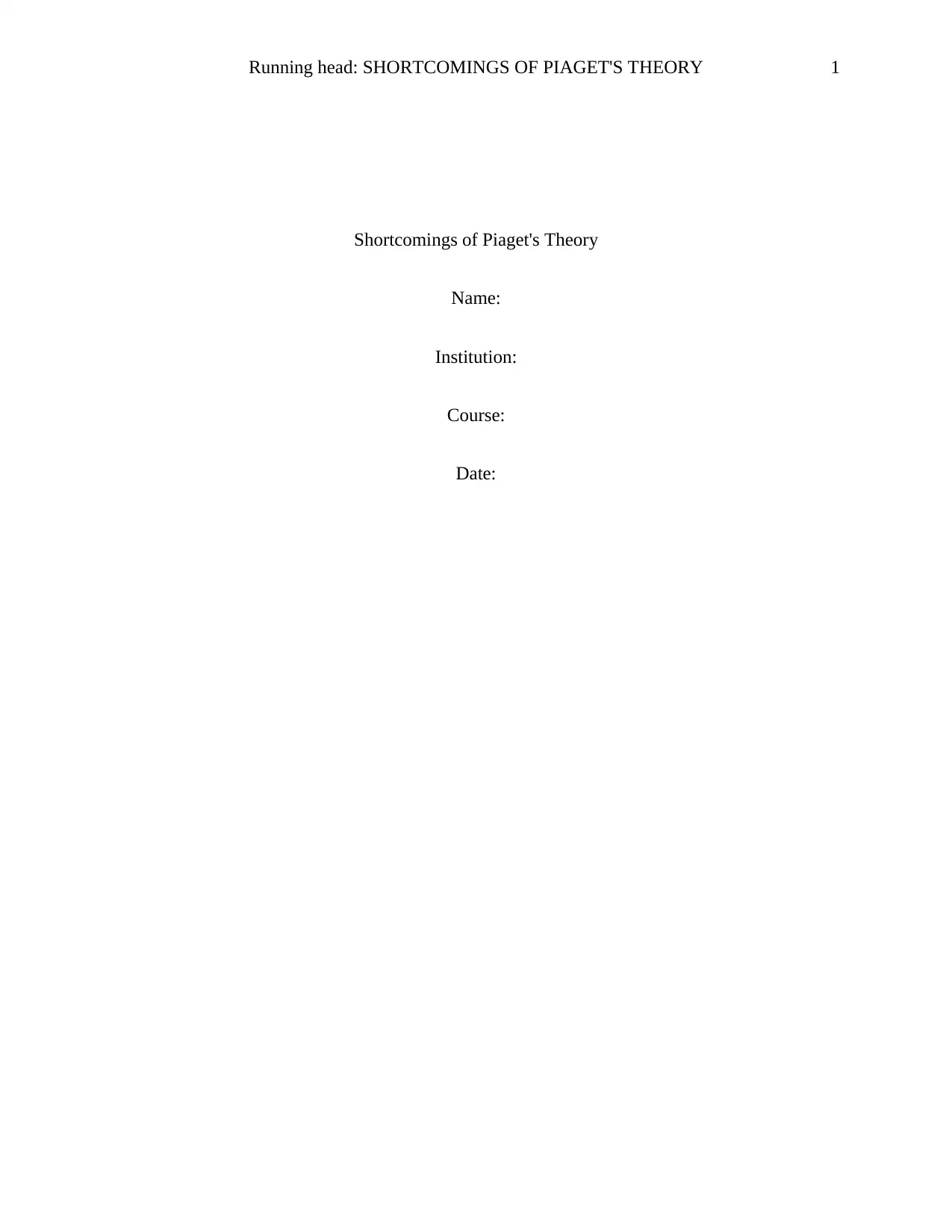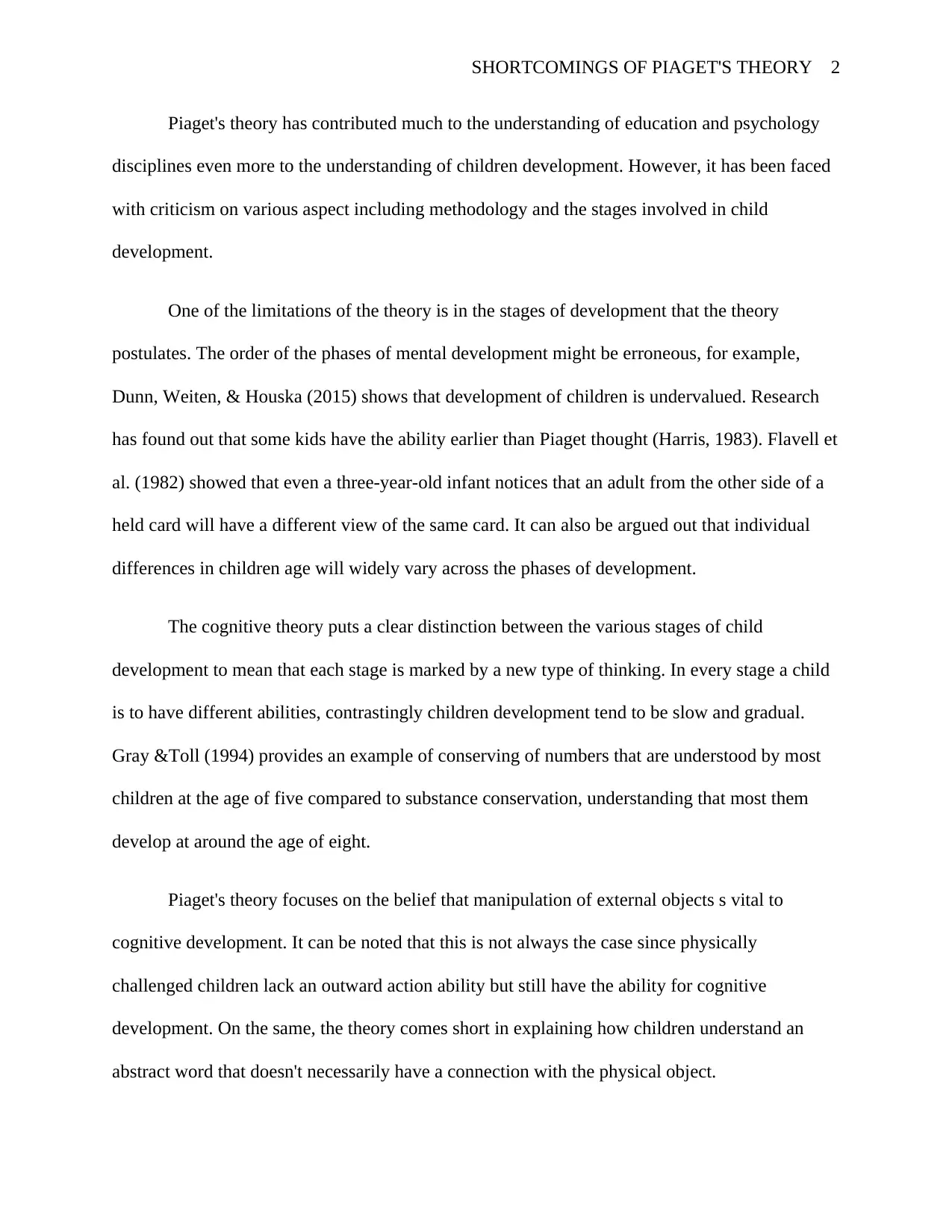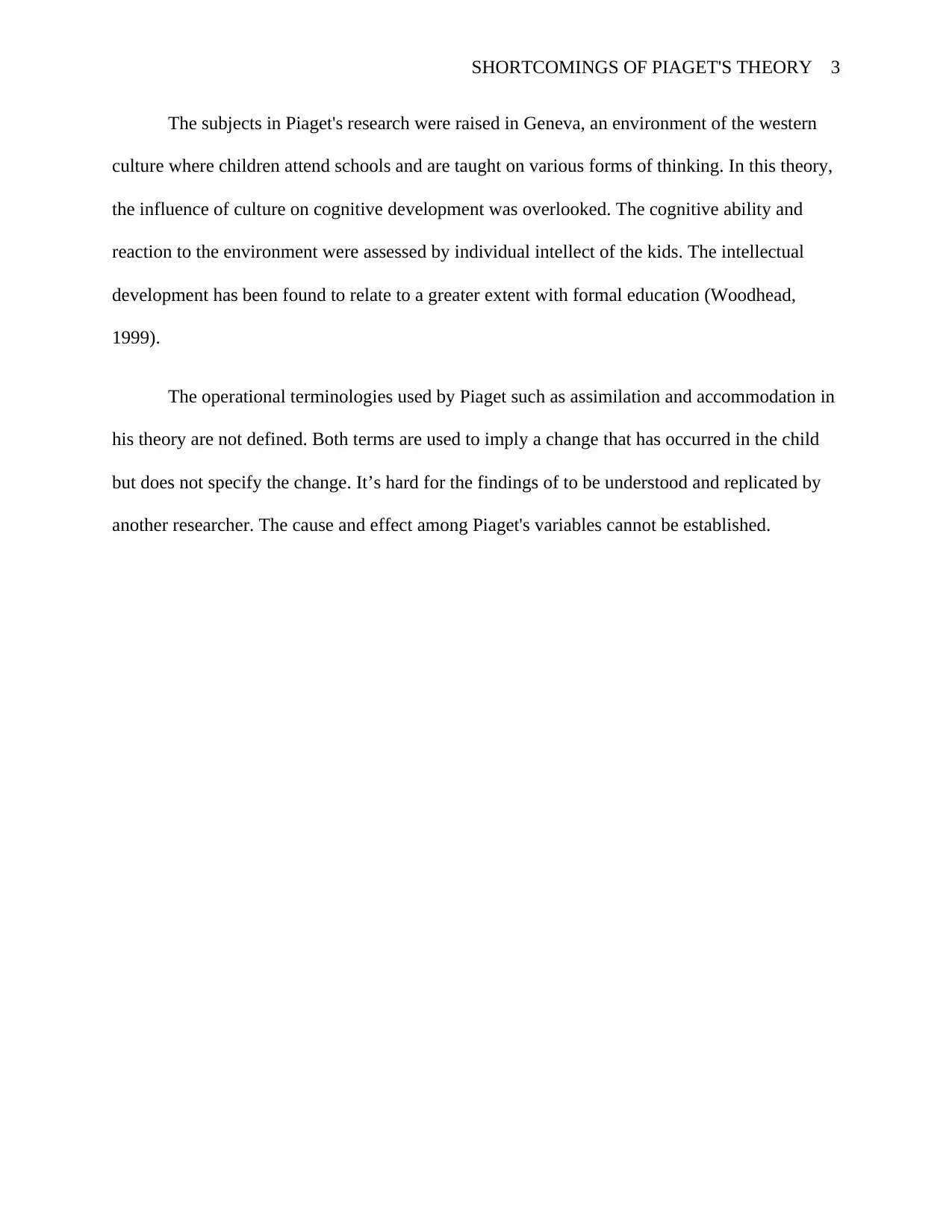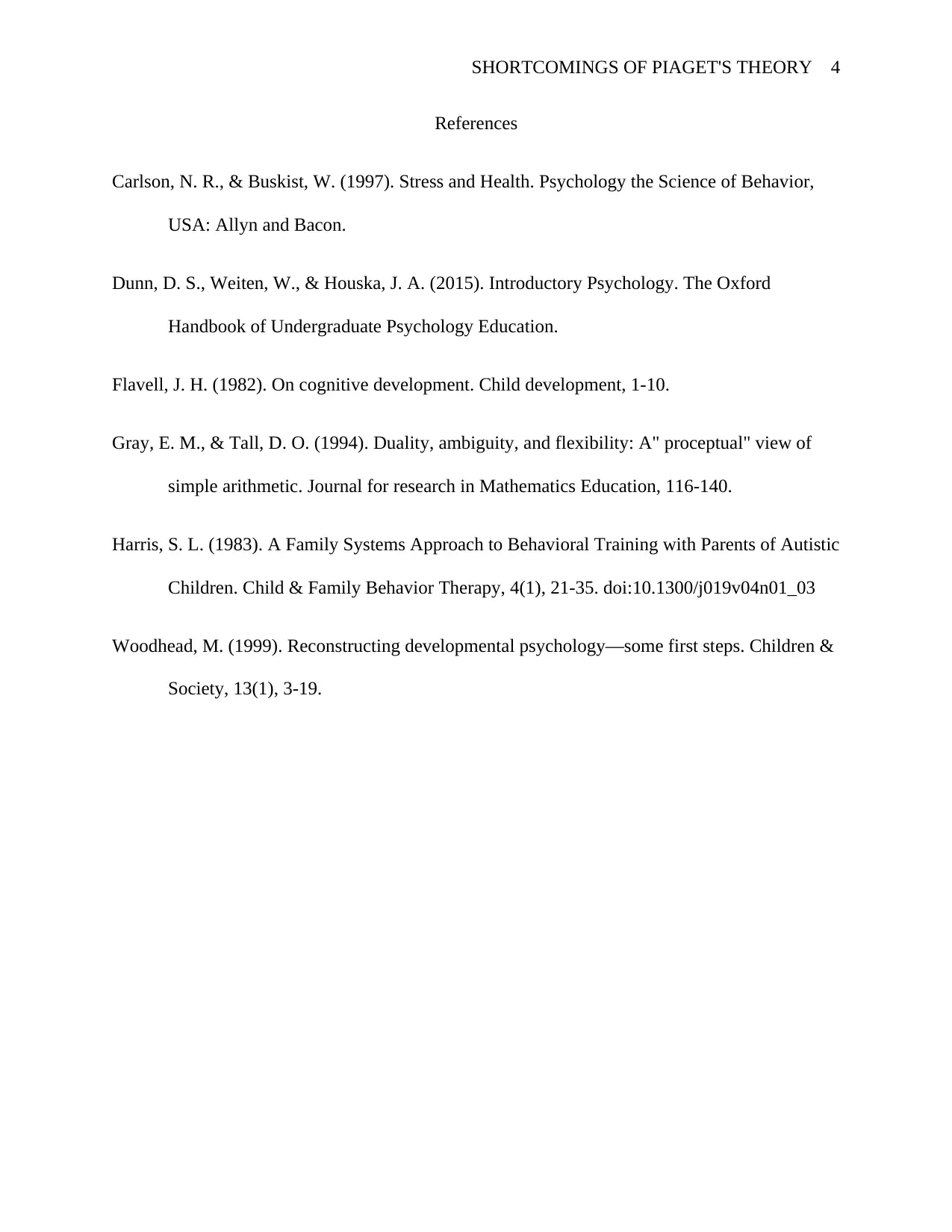Critical Analysis: Shortcomings and Limitations of Piaget's Theory
VerifiedAdded on 2020/03/28
|4
|690
|360
Essay
AI Summary
This essay critically examines the shortcomings of Jean Piaget's theory of cognitive development. It addresses criticisms related to the stages of development, highlighting research that suggests children may acquire abilities earlier than Piaget proposed. The essay discusses the potential underestimation of individual differences in children's cognitive development and the gradual, rather than distinct, nature of cognitive stage transitions. Furthermore, it explores the theory's limitations in considering the role of external objects, abstract concepts, and cultural influences on cognitive development. The essay also points out the lack of clear definitions for key operational terminologies within Piaget's framework, making it difficult to replicate and understand the findings. Overall, the essay provides a comprehensive analysis of the limitations of Piaget's theory.
1 out of 4










![[object Object]](/_next/static/media/star-bottom.7253800d.svg)